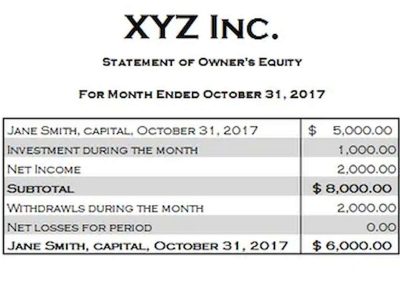How do you use the Shareholders Equity Formula to Calculate Shareholders Equity for a Balance Sheet?

By understanding its components and applications, businesses and investors alike can make smarter decisions. Whether you’re evaluating a company’s growth retained earnings or planning your next investment, stockholders’ equity offers invaluable insights into long-term success. Let us consider another example of a company SDF Ltd to compute the stockholder’s equity. As per the company’s balance sheet for the financial year ended on March 31, 20XX, the company’s total assets and total liabilities stood at $3,000,000 and $2,200,000, respectively.
- The following is data for calculating the Shareholder’s equity of Apple.Inc for the period ended on September 29, 2018.
- Perhaps a corporation does not want to part with its cash, but wants to give something to its stockholders.
- Below is an example screenshot of a financial model where you can see the shareholders equity line completed on the balance sheet.
- The land’s fair market value is not as clear since there has not been a comparable sale during the past four years.
- Net income is the total revenue minus expenses and taxes that a company generates during a specific period.
Other comprehensive income (OCI)
These shares are no longer outstanding and don’t count toward earnings per share calculations. Companies buy Cash Flow Management for Small Businesses back their stock for various reasons, like boosting share prices or consolidating ownership. For instance, if a company experiences losses or pays large dividends, its retained earnings will shrink.

How to Calculate Shareholders Equity
It represents what’s left for shareholders after all company debts are paid. The second formula (Common Shares + Preferred Shares + Paid-In Capital + Retained Earnings) breaks down the components that make up SE, showing its sources of funding and accumulated profits. Financial equity represents the ownership interest in a company’s assets after deducting liabilities.

Stock Exchanges: Where Shares Are Bought & Sold
- In some cases, a company’s financial statements may include a table called the reconciliation of stockholders’ equity.
- Investors also use equity to compare companies within the same industry, identifying which ones offer the best value.
- For instance, if a company experiences losses or pays large dividends, its retained earnings will shrink.
- If used in conjunction with other tools and metrics, an investor can accurately analyze the health of an organization.
- These options are the balance sheet method, the accounting equation method, and the summation of equity components method.
Retained earnings, also known as accumulated profits, represent the cumulative business earnings minus dividends distributed to shareholders. To fully understand this concept, it’s helpful to know how to calculate retained earnings, as it provides insight into a company’s profitability over time. The share capital represents contributions from stockholders gathered through the issuance of shares. It is divided into two separate accounts common stock and preferred stock. By comparing total equity to total assets belonging to a company, the shareholders equity ratio is thus a measure of the proportion of a company’s asset base financed via equity.
Applications of Stockholders’ Equity in Business and Investing
If the company ever had to be liquidated, it’s what the shareholders would get. Adam Hayes, Ph.D., CFA, is a financial writer with 15+ years Wall Street experience as a derivatives trader. Besides his extensive derivative trading expertise, Adam is an expert in economics and behavioral finance.

MVE, on the other hand, represents the total value of a company’s calculate stockholders equity outstanding shares in the stock market. It is calculated by multiplying the current stock price by the number of outstanding shares. The first formula (Assets – Liabilities) calculates SE as a residual value.

#4 – Contributed Capital

Net worth, on the other hand, is a more generic term that can apply to both individuals and businesses, representing the total value of assets minus liabilities. It all starts with an understanding of the relationship between the income statement and balance sheet. This calculator streamlines the process of determining shareholders’ equity, making it accessible for stakeholders to assess a company’s financial position quickly.

